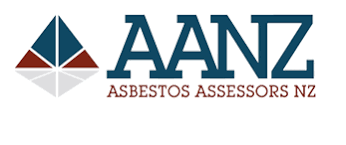 WORKPLACE HEALTH AND SAFETY Asbestos is New Zealand's primary reason for workplace death. The government points out that close to 170 people die every year from asbestos-related diseases. With so many casualties, there is no surprise that the Health and Safety at Work Act that came into force has changed the way workers manage asbestos if they come into contact with it. However, this change could catch a number of people off guard. Health and safety in the workplace can be impacted by asbestos-containing materials. What responsibilities do workers and business have? Asbestos is a grouping of materials that were commonly used up until the 1990s. It was a favoured building material due to its strength, durability and resistance to both fire and water. As a result of its versatility, it was used for a number of different applications and can be found in a wide variety of locations. These include roofs, ceilings, external cladding and eaves. Due to health risks that asbestos presents, the government introduced the Health and Safety at Work (Asbestos) Regulations 2016. The new regulations ensure that all workers and the person conducting a business or undertaking (PCBU) are aware of their responsibilities. For example, if a PCBU is unsure as to whether asbestos is present within a workplace, Section 48 determines that it is the PCBU's responsibility to ensure an inspection and analysis of a sample is conducted. What obligations do workers and companies have? Managing asbestos removal Alongside changes to the structure of workplace health and safety, the new regulations also introduce a new licensing system for asbestos removal. The system divides removal into two licenses. Class A allows any type or quantity of asbestos or asbestos-containing material (ACM) to be removed. This includes friable asbestos and ACM, asbestos-contaminated dust or debris (ACD) and non-friable asbestos. Class B only allows for the removal of non-friable asbestos or ACM or any amount of ACD. Alongside this, from April 2018 the government will require PCBUs who engage in the removal of asbestos to have an asbestos assessor's license. An assessor will provide air quality monitoring while removal work is being undertaken, investigate the finished job and sign off on it. For PCBUs, if they commission the removal of asbestos it is their duty to make sure that the work is completed by a licensed removalist. One of the major problems that comes with asbestos removal is coordinating with the multiple PCBUs that are typically involved in a project. With traditional paper-based systems, it can be hard to communicate responsibilities and activities among workers and construction companies. One way to overcome this is through the use of safety software that is mobile applicable. If you would like to learn more about how asbestos removal and safety apps can work together.
0 Comments
Leave a Reply. |
BLOG
June 2024
Categories |
LocationLocated on Grahams Road, we are right in the centre of Christchurch, making it a lot easier on the whole for people to reach out to us for help at any time during the day. |
|






 RSS Feed
RSS Feed